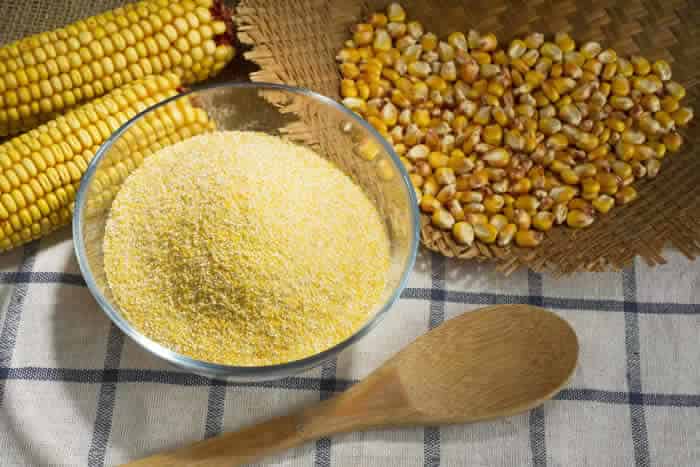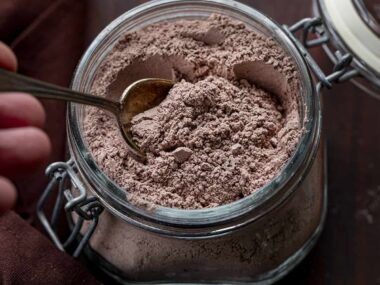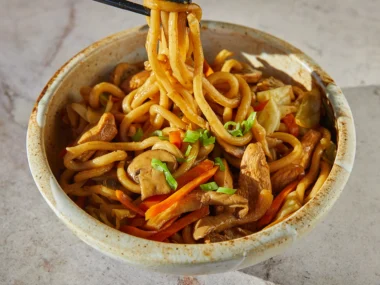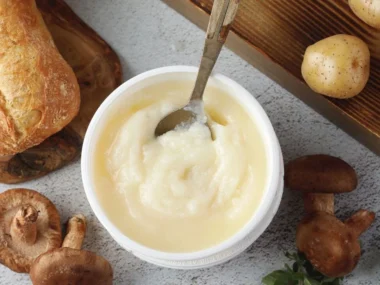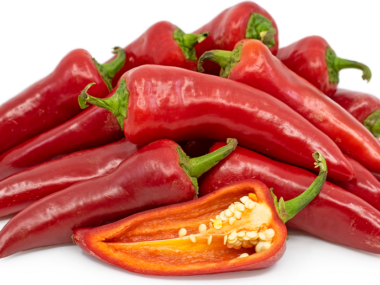When making pizza at home, one important step is preparing the pizza dough and the surface it will bake on. Many recipes call for cornmeal to be sprinkled on the baking surface or pizza peel, which helps keep the dough from sticking and adds a touch of extra flavor and texture. But what if you don’t have cornmeal on hand or simply don’t want to use it? Well, there are plenty of substitutes that can do the job just as well, and you might already have some of them in your kitchen.
In this blog post, we’ll explore a variety of alternatives to cornmeal for your pizza-making needs. Each substitute has its own benefits, and some may even bring new flavors or textures to your pizza.
13+ Corn Meal Substitute For Pizza
1. Flour

One of the most straightforward substitutes for corn meal is regular flour. You can use all-purpose flour, whole wheat flour, or even bread flour. Flour serves a similar purpose as cornmeal—it prevents the dough from sticking to the baking surface or pizza peel. While flour doesn’t have the gritty texture that cornmeal has, it works perfectly fine to keep the pizza dough from sticking and makes it easier to slide the pizza into the oven. It also won’t add any noticeable flavor, so your toppings can still shine through without any added taste from the base.
To use flour as a cornmeal substitute, simply dust your work surface, pizza peel, or baking tray with a light layer of flour before placing your pizza dough on it. Just be careful not to use too much, as too much flour can burn in the oven and leave a bitter taste.
2. Semolina
:max_bytes(150000):strip_icc()/easy-semolina-flour-substitute-4142772-hero-02-7626248b48604960bf3e7e8fb914fc33.jpg)
Semolina is another excellent cornmeal substitute for pizza making. Semolina flour is coarser than regular flour and has a slightly gritty texture, which is similar to that of cornmeal. It’s made from durum wheat and is commonly used in making pasta, but it works wonders for pizza baking too. Semolina prevents sticking and adds a pleasant crunch to the bottom of the pizza crust, making it one of the most popular substitutes for cornmeal.
Using semolina is simple: sprinkle it onto your baking surface or pizza peel before placing the dough on top. It also adds a bit of a nutty flavor, which can enhance the overall taste of your pizza.
3. Corn Flour

Corn flour, while similar to cornmeal, has a finer texture, making it a good substitute for those who don’t mind a less grainy surface. Corn flour is made from the same ingredient as cornmeal—ground dried corn—but it has a softer, more powdery feel. It still provides some of the flavor of cornmeal, though it won’t have the same level of crunch.
To use corn flour as a substitute, dust your pizza peel or baking tray with a light layer of it before adding your dough. It will help keep the pizza from sticking while still giving you a slight hint of corn flavor.
4. Polenta

Polenta is another great substitute for cornmeal and is quite similar in texture. Polenta is coarsely ground corn, just like cornmeal, but it can vary in grind size. It works well as a non-stick base for pizza dough, providing that slightly crunchy texture many people love. If you already have polenta in your pantry, it’s a great option to replace cornmeal.
Use polenta the same way you would use cornmeal—sprinkle it on your work surface or pizza peel before placing your dough. This will give you a crunchy base and keep the pizza from sticking.
Read also, 10 Best Substitute For Laughing Cow Cheese
5. Rice Flour

Rice flour is another option that can be used as a substitute for cornmeal. It’s finer in texture than cornmeal but still works well to prevent sticking. Rice flour is commonly used in gluten-free baking and is made from finely ground rice. It doesn’t add much flavor, but it can do a good job of keeping the dough from sticking to the baking surface.
To use rice flour as a substitute, sprinkle it on your pizza peel or baking tray just as you would with cornmeal. It’s also a good option for those looking for a gluten-free substitute.
6. Ground Oats
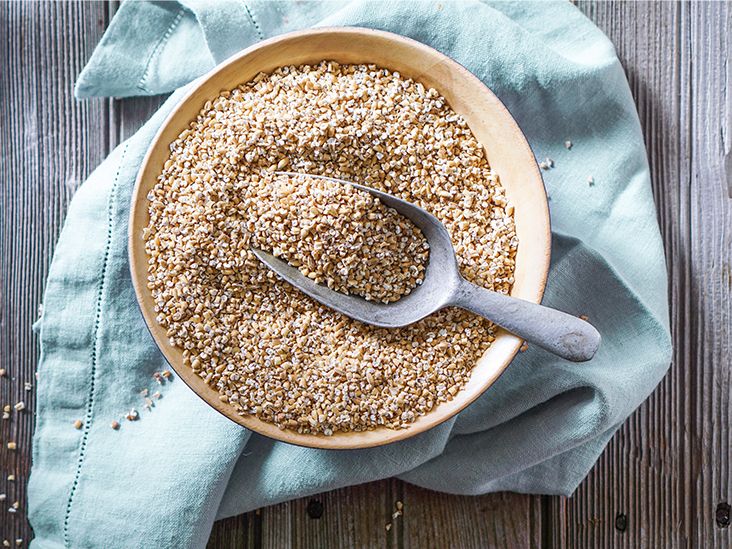
If you don’t have cornmeal, you might have oats at home that can be ground into a fine texture and used as a substitute. Ground oats provide a mild flavor and a slightly coarse texture that’s similar to cornmeal. This option works well for adding a bit of a rustic feel to the pizza crust.
To use ground oats, simply blend rolled oats in a blender or food processor until they resemble the texture of cornmeal. Then, sprinkle the ground oats on your work surface or pizza peel before adding the pizza dough. This will prevent sticking and add a bit of texture.
7. Breadcrumbs

Breadcrumbs can be an easy and effective substitute for cornmeal. They prevent the dough from sticking and also add a bit of texture to the bottom of the crust. You can use plain breadcrumbs, seasoned breadcrumbs, or even panko breadcrumbs, depending on what you have on hand. Just be aware that seasoned breadcrumbs may add additional flavors to your pizza, which could complement or clash with your toppings.
To use breadcrumbs, simply sprinkle a light layer onto your pizza peel or baking surface before placing your dough. Panko breadcrumbs, in particular, are a great choice if you want a bit more crunch on the bottom of your crust.
8. Cornstarch
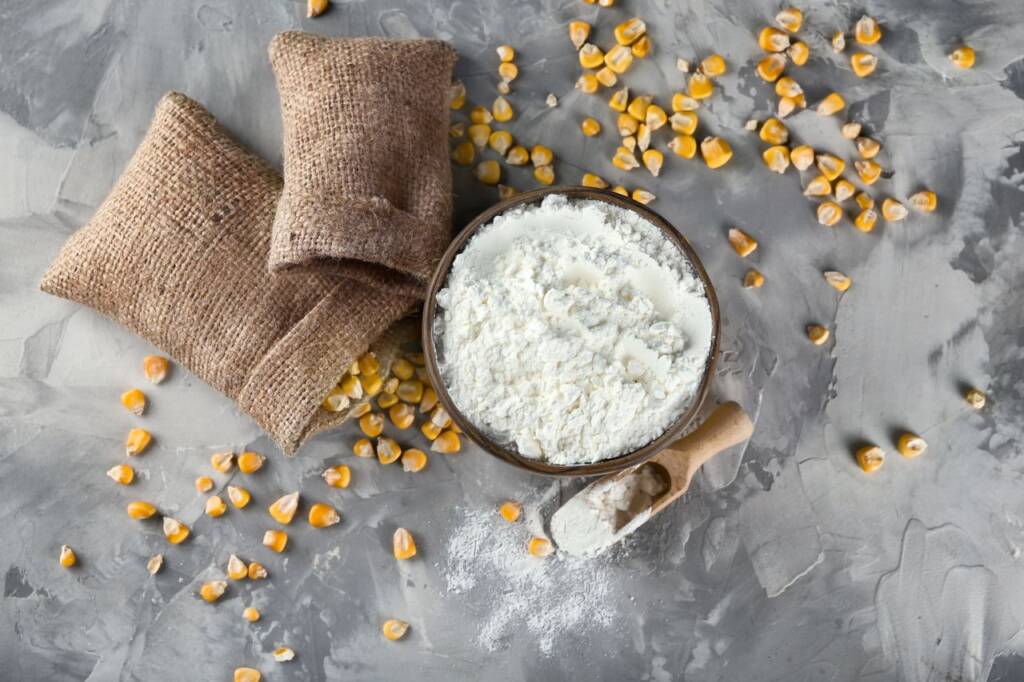
Cornstarch is another alternative that can be used in place of cornmeal. It is much finer than cornmeal, so it won’t provide any of the crunch, but it can still help to prevent sticking. Cornstarch has a neutral flavor, which means it won’t affect the taste of your pizza.
To use cornstarch, lightly dust your work surface or pizza peel with it before adding your dough. Because it’s very fine, make sure not to use too much, as it can get messy and potentially burn in the oven.
9. Almond Flour
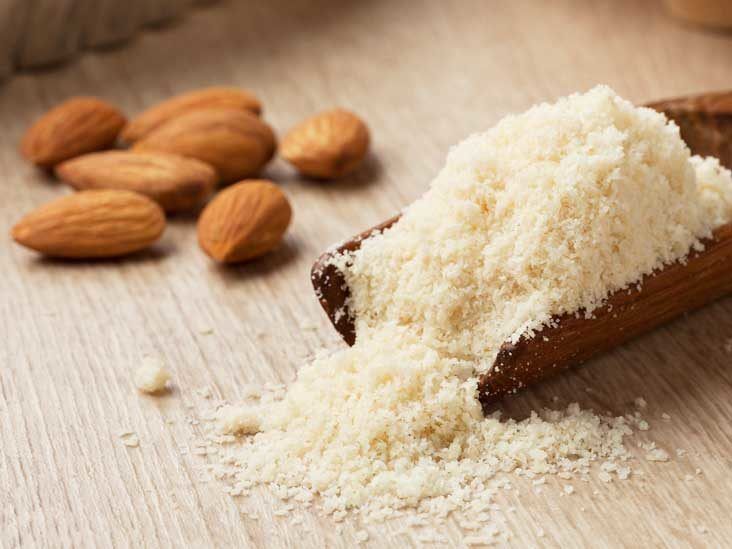
Almond flour is a gluten-free option that can be used as a substitute for cornmeal. Made from finely ground almonds, it has a slightly nutty flavor that can add a unique taste to your pizza crust. While almond flour doesn’t have the same gritty texture as cornmeal, it still works to prevent sticking.
To use almond flour as a substitute, sprinkle a light layer on your pizza peel or baking tray before adding the dough. It will help keep your pizza from sticking while adding a subtle nutty note to the flavor profile.
10. Coarse Wheat Bran

Coarse wheat bran can be used as a substitute for cornmeal, especially if you’re looking for something with a bit of texture. Wheat bran has a coarser consistency and can give the pizza crust a slightly crispy texture. It’s also a good source of fiber, which adds a bit of nutritional value to your pizza.
To use coarse wheat bran, sprinkle it on your work surface or pizza peel before placing your dough on top. This will help keep the pizza from sticking and add a slight crunch to the crust.
11. Ground Flaxseed

Ground flaxseed is another healthy alternative to cornmeal that can be used when making pizza. Flaxseed has a fine texture and is packed with nutrients like omega-3 fatty acids and fiber. It works well as a non-stick layer for your pizza dough and can add a bit of earthy flavor to your crust.
To use ground flaxseed, lightly dust your work surface or pizza peel before adding your pizza dough. It will help prevent sticking and give your pizza a slight boost in nutrition.
Read also, 10 Best Orange Juice Substitute For Baking
12. Crushed Crackers

If you have crackers on hand, you can crush them into fine crumbs and use them as a substitute for cornmeal. Crushed crackers can add a bit of crunch and flavor to the bottom of your pizza crust. You can use plain crackers or even flavored ones if you want to add an extra layer of taste to your pizza.
To use crushed crackers, simply place them in a plastic bag and crush them with a rolling pin until they resemble the texture of cornmeal. Sprinkle the crushed crackers on your work surface or pizza peel before adding the dough.
13. Coconut Flour
:max_bytes(150000):strip_icc()/GettyImages-915506598-2000-5d559ea5265c431d8dec26506f674658.jpg)
Coconut flour is another substitute you can use if you’re looking for a gluten-free option. It has a very fine texture and a slightly sweet flavor, which can add an interesting twist to your pizza. Coconut flour is very absorbent, so you don’t need to use a lot of it—just a light dusting will do.
To use coconut flour, sprinkle a small amount on your pizza peel or baking tray before placing your dough on it. It will help prevent sticking while adding a subtle hint of coconut flavor.
14. Grits
:max_bytes(150000):strip_icc()/Southern-Living-cheese-grits-3x2-1635-6124162e4ab34b9cb8085cfea3597058.jpg)
Grits are coarsely ground corn, similar to polenta and cornmeal, and they make a good substitute when you want that gritty texture. They can be used in the same way as cornmeal to prevent the dough from sticking and to give the crust a bit of crunch. Depending on the type of grits you have, they might be slightly larger than cornmeal, but they still work quite well.
To use grits as a substitute, sprinkle a layer on your work surface or pizza peel before adding the pizza dough. It will help keep the pizza from sticking while providing a similar texture to cornmeal.
15. Whole Wheat Couscous

Whole wheat couscous, while not as common as some of the other substitutes, can also work as a replacement for cornmeal. Couscous is made from crushed durum wheat, and its small granules can provide a similar texture to cornmeal. It adds a bit of a wheaty flavor to the crust, which can complement many pizza toppings.
To use whole wheat couscous as a cornmeal substitute, simply sprinkle a layer onto your pizza peel or baking tray before placing your dough. Since couscous is smaller than most other substitutes, it can easily fill the gaps and prevent the dough from sticking. It also contributes to a nice texture on the bottom of your pizza crust, enhancing the overall eating experience.
Conclusion
Finding a substitute for cornmeal when making pizza doesn’t have to be a challenge. With so many options available, you can easily replace cornmeal with ingredients you may already have in your kitchen. From flour and semolina to unique choices like almond flour and ground oats, there’s a perfect substitute for everyone. By experimenting with these alternatives, you can discover new flavors and textures that will elevate your pizza-making experience.
